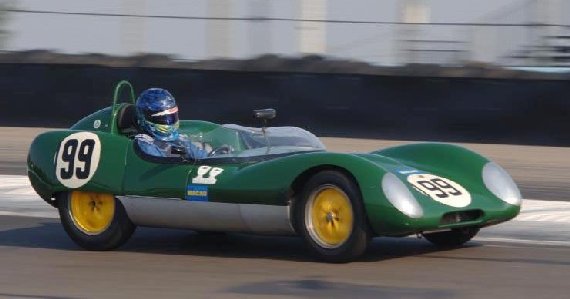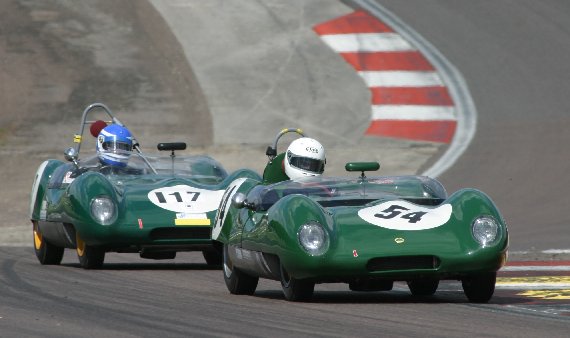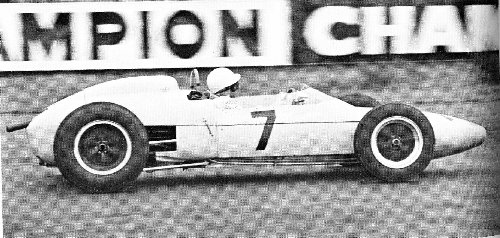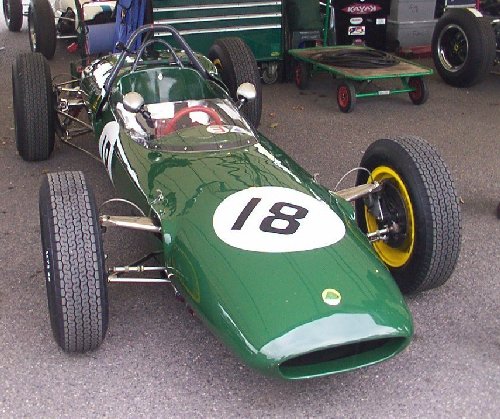
Peter Horsman
 |
Historic Lotus Register | Lotus Seventeen, 18(F1 & F2), 21, & 24 Peter Horsman |
|---|
Home Farm, Fartherwell Road
WEST MALLING
Kent ME19 6RH
Telephone:07973 754315
To send e-mail click on name above
Peter is Registrar for the Lotus Seventeen, 18(F1 & F2), 21, & 24
| Lotus Seventeen |
|---|
 |
| Chassis 652 at Dijon, 2008. BRDC 50s Sports Cars race, P2 (P1 in class) |
The Lotus 17 was Chapman's answer to the Lola Mk 1, which by late 1958, was beating the venerable (but by then a good few years old) Eleven with monotonous regularity. The Lola was smaller and lighter then the Eleven, and so Chapman's riposte was even smaller, even lighter, even more aerodynamic.
 |
| Chassis 652 emerges after winter spruce-up. Mallory Park, 2005 |
It was designed by Len Terry under Chapman's guidance and it incorporated a number of new features, although in fact was the last front-engined sports racing car Lotus made. Its rear suspension was the Chapman Strut, first used on the single seat Lotus Twelve, the Elite Coupe and the Lotus Fifteen. Its front suspension was novel for a sport-racing car as it used the MacPherson suspension first seen on the Ford Consul in 1952), and was very light. It was Lotus's first glass fibre-bodied sports racing car (although the Works Elevens had fibreglass bodies in 1958), had a very low frontal area and the lightest weight of any multi-seat production Lotus ever made. The declared (albeit dry) weight was 340kgs (17s nowadays struggle to get below a wet 400kgs!). It should have been a very effective weapon.
 |
| Chassis 652 at Silverstone, 2008 in 6th place behind 2 litre Cooper Monaco and in front of 3.4 litre Lister. BRDC 50s Sports Car race. P6 (P1 in class) |
But at its first race in early April 1959, it became apparent that the handling was flawed, with the front struts bending and binding under racing loads. By the time the problem had been identified and rectified by the substitution of the front struts by more conventional wishbones (which was subsequently offered as a factory modification to all owners' 17s), it was all too late and racing had moved on.
 |
| Chassis 656 at Macau, 2004 |
So only 21 cars were actually produced. Of these, about a dozen exist today, and it is only now, in modern historic racing where two cars race in Europe and two in the US, that their potential is being realised.
 |
| Chassis 656 at Macau, 2004 |
Engine-wise, 17s ran in period with all the small capacity Coventry Climax options, 742cc FWMA (as in the works 1959 Le Mans entries, which were going very well in class until electrical problems forced their retirement), 1098cc FWA (the normal small capacity racing class of the day), 1216cc FWE and (in North America) 1460cc. Nowadays, they usually run with the 1216cc FWE engine, although the US cars now usually run with the 1460cc FWB.
 |
| Chassis 652 heads chassis 655, Dijon, 2008 |
| Lotus Eighteen F1 and F2 |
|---|
 |
| Lotus 18/21 |
 |
| Lotus 21 |
 |